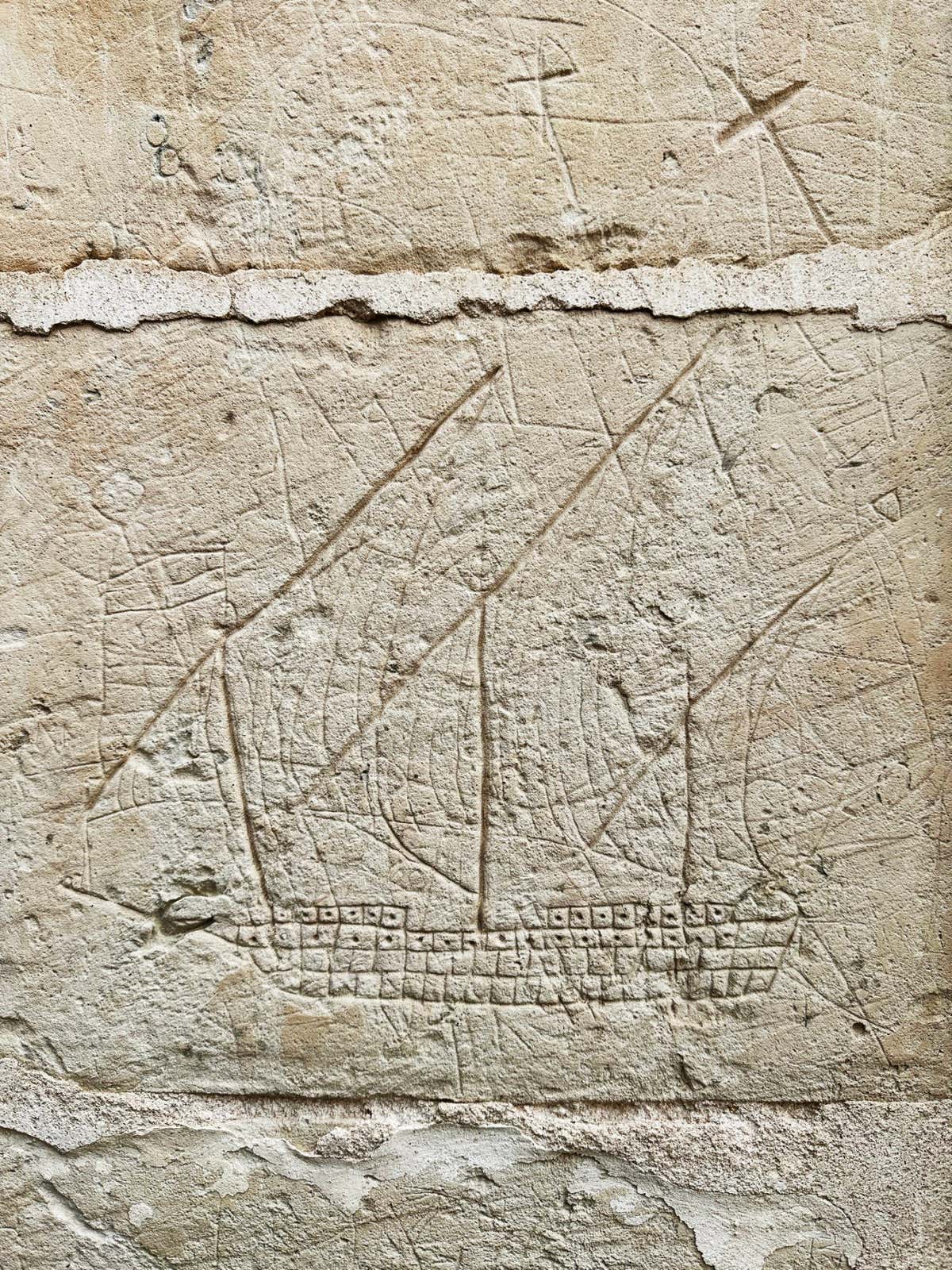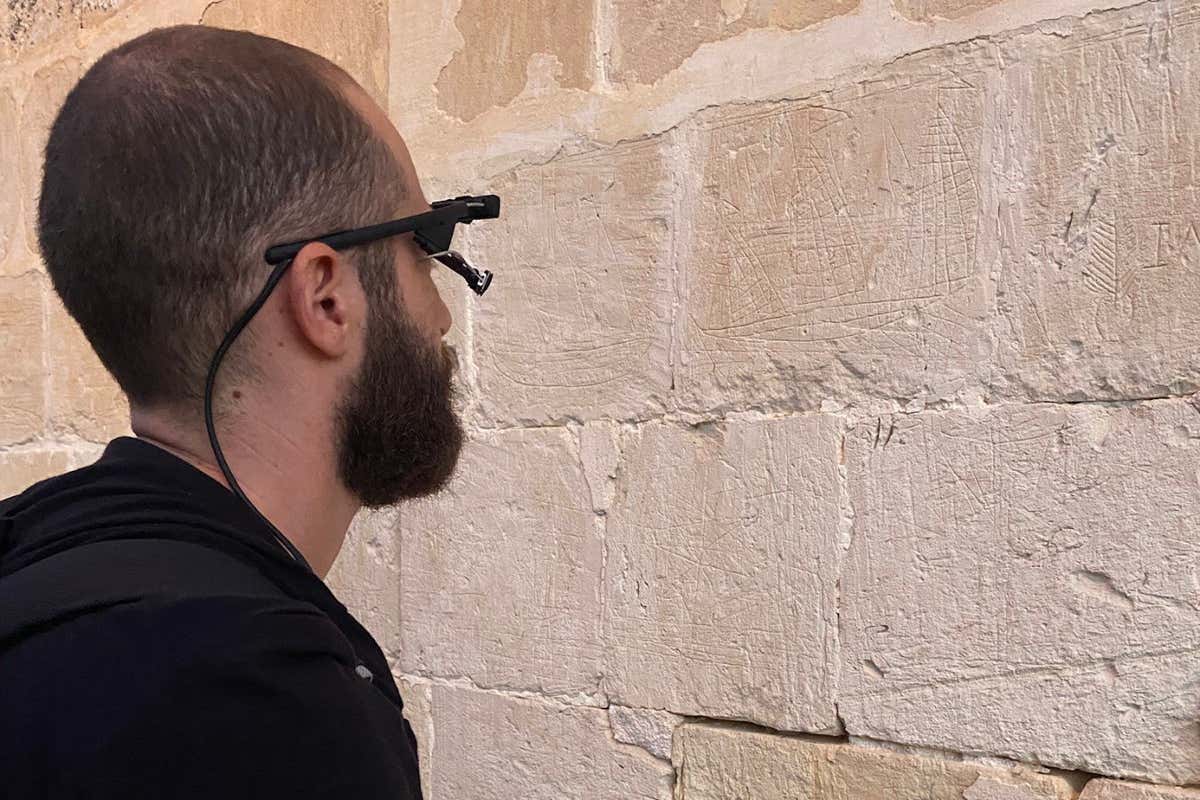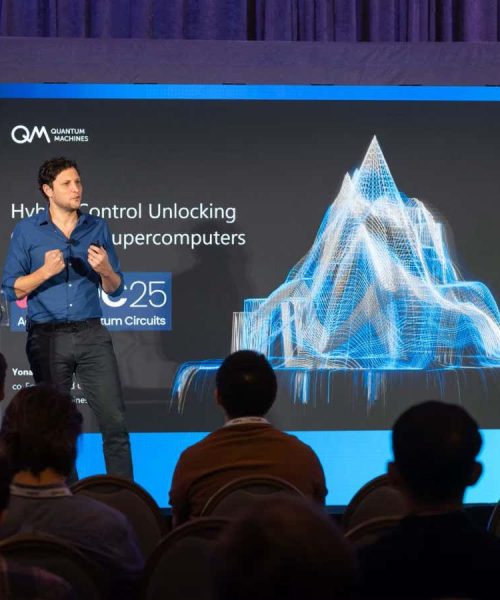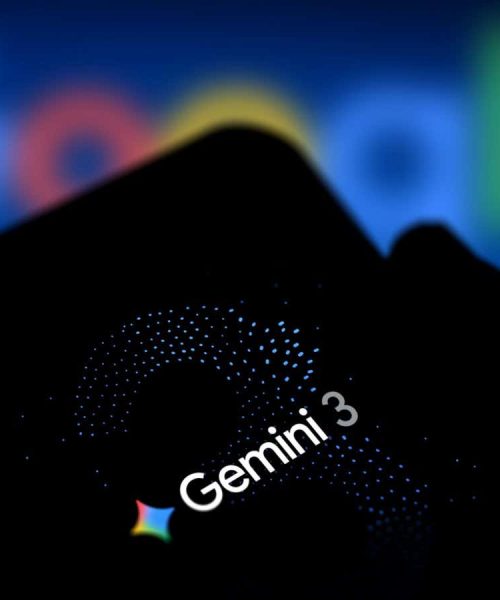
Reinterpretations of the etchings
Matthew Attard and Galleria Michela Rizzo
At the 60th Venice Biennale, Maltese artist Matthew Attard addresses his country’s maritime heritage, along with notions of faith and progress, through the prism of AI-driven technology. His work focuses on images of ships that were graffitied by seafarers on the stone facades of chapels in Malta between the 16th and 19th centuries, one of which is pictured below.

Ship graffito at Our Lady of the Visitation Chapel, Wied Qirda – Żebbuġ, Malta
Elyse Tonna
Attard, pictured below, retraced the incised lines of the hulls, rigging and billowing sails using his gaze, in a process facilitated by an eye-tracking device and generative algorithms. “This gaze was translated into data points by the technology, which were then further interpreted to generate lines or drawings,” he says.
Advertisement
A database of digital images generated from the data points captured the engravings from various perspectives, from which artworks such as 3D scans and video pieces were created.

Matthew Attard with an eye-tracking device.
Elyse Tonna
The maritime graffiti resonates with cultures whose relationship with the sea has been – and still is – crucial, where the ship remains a metaphor for hope and survival. Similarly, Maltese chapels have long been places of sanctuary. Attard says he wanted to explore “parallels with our current ‘blind faith’ in digital technology”.
His reinterpretations of the etchings are ghostlike, skeletal impressions, as shown in the main image. “One could argue that even the most traditional mediums, such as a pencil or a piece of charcoal, can be considered a form of drawing technology,” he notes. His show is at the Malta Pavilion at the Venice Biennale, Italy, commissioned by Arts Council Malta, until 24 November.
Topics:





